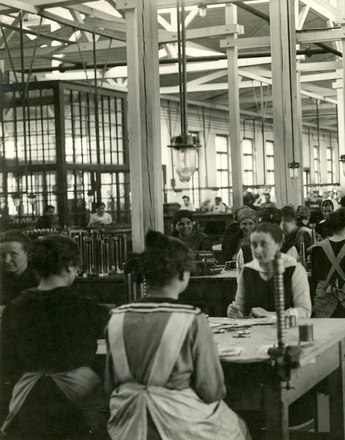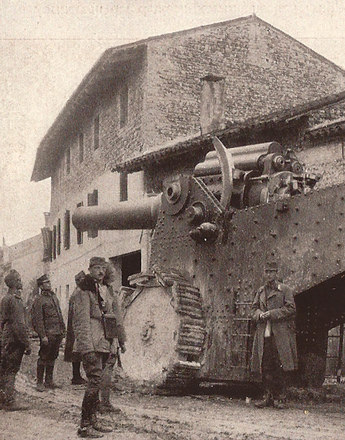Despite all the problems, the production of armaments in the Austro-Hungarian Empire reached its peak in 1916 and 1917. The decline in production in the last year of the war was all the more dramatic. At the same time, social disputes intensified.
Economic war output reached its peak in Austria in 1916 and 1917. This was followed by a sudden decline in the output of arms, which accelerated in 1918, accompanied by increasing supply and transport problems. As Kurt W. Rothschild described, the Empire had long ceased to be a “solvent enterprise” before it collapsed at the end of 1918.
The high production figures for the armaments sector – with 7,700 cannons being produced in 1917 as compared with 1,700 in 1915, 15,400 machine guns as compared with 1,200 (1914), and 7.7 million shells as compared with 0.3 million (1914) – should not disguise the progressing ‘dematerialisation’ of the economy, which was becoming increasingly apparent, expressed above all in the lack of raw materials and completely insufficient investments in the non-armaments sector. Overall, the state of the industrial structure of the Empire at the end of the war was considerably worse than in 1914, since in the civilian sectors worn-out production plant had not been replaced. The enormous loss of human life – 1 million out of 8 million soldiers died – must also be included in the phenomenon of ‘dematerialisation’, even if these losses cannot be directly expressed in figures.
Overall, the Empire’s entire war costs probably corresponded to Austria-Hungary’s national income in 1914. It is estimated that they accounted for one quarter to one third of ongoing national income between 1914 and 1918. The economic growth of an entire year was in the true sense of the word ‘blown away’. In economic terms, the Central Powers were far inferior to the allies (see the table). In addition, the naval blockade cut them off increasingly from supplies of raw materials.
The excessive demands made of resources by the battle of materials led in 1915 to shortages in the supplies to the Austro-Hungarian (and the German) army, which in the German Reich was countered by what was known as the Hindenburg Programme. 1916 and 1917 saw the peak of the Central Powers’ armaments efforts. Production increased considerably in Austria Hungary in 1916 too, but by 1917 it was becoming apparent that the programme’s ambitious targets could not be achieved in the longer term. The reasons were both the exhaustion of human resources and the never-ending bottlenecks above all in the food sector and in transport. By 1917, the production in the militarily important fields of iron and steel had begun to fall again. In 1918, symptoms of disorganisation (reinforced by social unrest in industry) were becoming increasingly apparent.
Translation: David Wright
Clark, Christopher: Die Schlafwandler. Wie Europa in den Ersten Weltkrieg zog, München 2013
Janz, Oliver: Der Große Krieg, Frankfurt am Main 2013
Rauchensteiner, Manfried: Der Erste Weltkrieg und das Ende der Habsburgermonarchie, Wien/Köln/Weimar 2013
Schulze, Max-Stephan: Austria-Hungary´s economy in World War I, in: Schulze, Max-Stephan/Harrison, Mark: The Economics of World War I, Cambridge 2005, 77-111
Wegs, Robert J.: Die österr. Kriegswirtschaft 1914 – 1918, Wien 1979
-
Chapters
- The underlying causes of the First World War
- The folly of the erstwhile rulers
- Schumpeter’s imperialism theory: Did big business press for war?
- A state living beyond its means
- Problems of the war economy
- High mark and decline of the economic war effort
- Shifts in the production structure
- The change in the social balance of power in the course of the war






